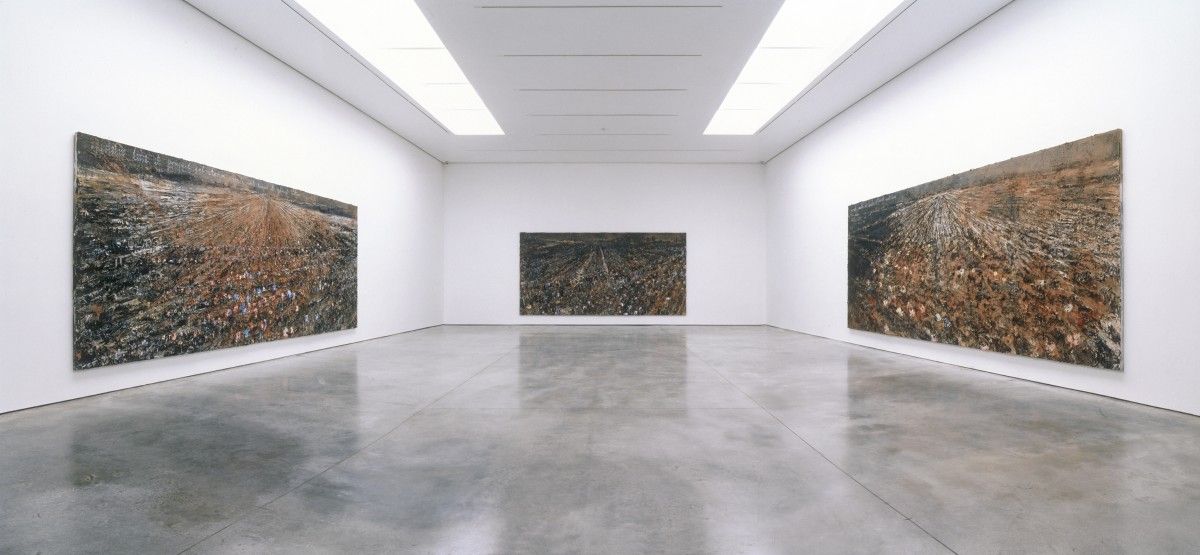
When I was at university for some time Anselm Kiefer was among my favourite artists. I was into Derrida and deconstruction, I read Paul Celan and raved about Peter Eisenman, Bernard Tschumi, Daniel Libeskind and Coop Himmelb(l)au. Anselm Kiefer fitted into this line-up, indeed his work was featured in a book called What is Deconstruction? At the time Coop Himmelb(l)au had designed a proposal for Kiefer's new studio in the South of France, but it was never built. Instead, Kiefer moved to an abandoned industrial site in Barjac in the Provence. The studio compound which Kiefer has since constructed is featured in Architecture Now Volume 4 in its own right.
But at some point I began to find his work a bit too heavy, too teutonic. There is a fine line between the sublime and the ridiculous. Apart from that I became interested in other things and other art.
A few years ago, when I visited the Museum Küppersmühle in Duisburg, which houses a large collection of works by Anselm Kiefer, I was once again impressed. I also felt the same reservations well up inside me. Sometimes his work collapses under its own weight.
In London you can currently see Anselm Kiefer at his best, at the Royal Academy of Art (until April 30) and at his worst, at the White Cube Gallery in Mason's Yard (until March 17).
In the courtyard of the Royal Academy Kiefer has erected two towers made of reinforced concrete panels. The whole construction seems rather unsteady. The building blocks look like stacked containers or the ruins of a building that has been shot to pieces. Kiefer himself has rejected the reference to the Twin Towers. The fact that the work can be read in multiple ways is part of its strength as a work of art. The title, "Jericho", makes a biblical reference. It could also have been called Babel, but perhaps that would have been too obvious. It is unfortunate that Kiefer found it necessary to balance a boat on top of one of the towers. The post-apocalyptic image of the two towers is strong enough in itself. In a way the towers also tell of Kiefer's ambitions as an artist. He reaches ever higher, but the construction could tumble at any moment. Its failure is embedded in the work itself.
The centrepiece at White Cube Mason's Yard gallery is an installation on the ground floor comprised of eighteen paintings. A palm tree, eradicated with roots and all, has been laid on the gallery floor in front of the paintings. The piece is called "Palmsonntag", or "Palm Sunday". I'm not sure whether an art student would be able to get away with this. At the lower ground floor are three of Kiefer's large-scale scorched earth paintings. I could tell you how flowers have started to blossom on Kiefer's wastelands, speaking of resurrection and the power of nature. But the truth is, these paintings leave me totally indifferent.
From May 31 to July 8, 2007 Anselm Kiefer will create an installation for the Grand Palais in Paris as part of the newly inaugurated Monumenta series. The rat race for ever grander art continues. Some of the studio photos look interesting though, because they show the works for what they are and not as elevated works of art.
Anselm Kiefer: Aperiatur Terra is White Cube Mason Yard, London until 17 March 2007 and at the Royal Academy until 30 April 2007.
Links
Trouble in paradise, Simon Schama's review of the exhibition at White Cube reads as a kind of summary of conventional Kiefer criticism.